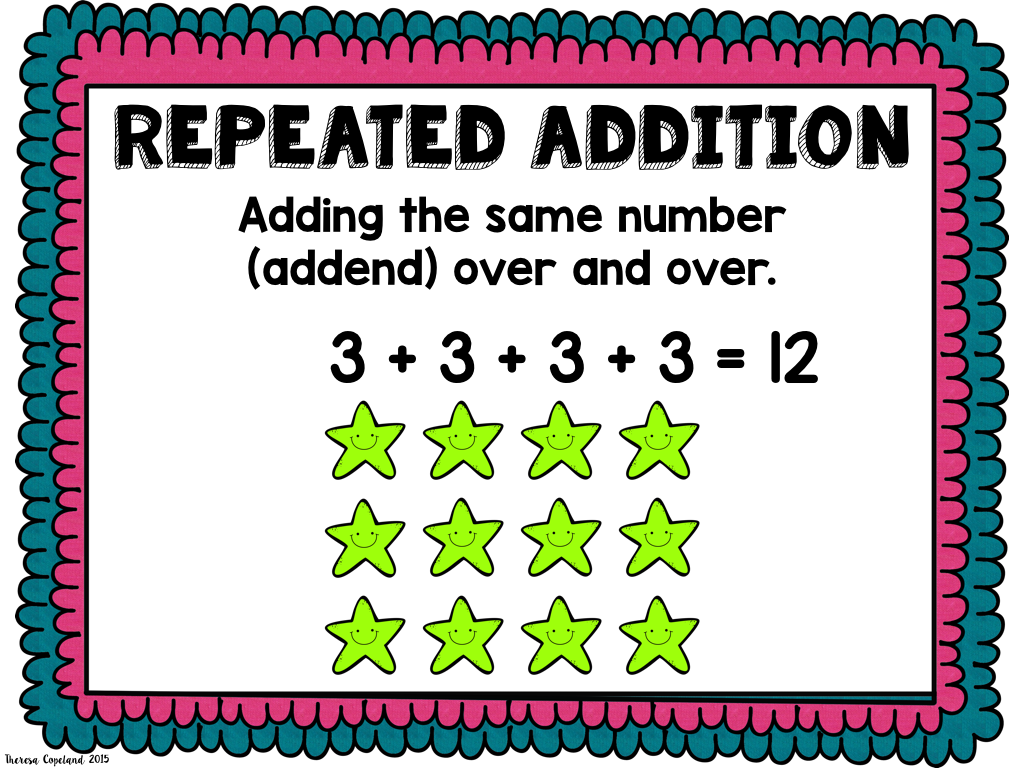Arrays And Repeated Addition
About Repeated Addition
How to use addition to find the total number of objects in an array, examples and solutions, represent the total number of objects arranged in a rectangular array as an expression with the repeated addition of number of objects in each row or column, repeated addition with arrays, videos, worksheets, games and activities that are suitable for Common Core Grade 2.
2nd and 3rd Grade teachers, explore Numberock's equally fun teaching resources with a free month of access available for a limited time at httpnumberock.c
Repeated Addition Practice Match up by Srothman 2nd Grade Math Arrays - Repeated Addition Gameshow quiz by Vanessaclaudia8 Arrays with Repeated Addition Gameshow quiz by Sray1
Multiplication Grouping, Arrays and Repeated Addition Support your child to build upon their multiplication skills with this activity aimed at children aged 6 to 7. It includes 10 multiplication Read more
7 Ways to Teach Arrays and Repeated Addition We don't want students to just memorize multiplication facts - we want them to understand how multiplication works! This is why repeated addition like 333 and arrays are powerful strategies to make beginning multiplication accessible and engaging to all students. If you need an explanation of arrays, here is a good one for teachers. Read on
Repeated Addition Arrays Common Core State Standards 2.OA.4 Operations amp Algebraic Thinking Work with equal groups of objects to gain foundations for multiplication. Use addition to find the total number of objects arranged in rectangular arrays with up to 5 rows and up to 5 columns write an equation to express the total as a sum of equal
Enjoy watching our Repeated Addition with Arrays video! Kids Academy's free educational videos and cartoons for children help to make learning engaging and fun!
Thousands of parents and educators are turning to the kids' learning app that makes real learning truly fun. Try Kids Academy with 3-day FREE TRIAL! https
Physical Manipulatives Using items like counters, blocks, or tiles, students can create arrays on their desks. For example, they could arrange six blocks into two rows of three, then write the repeated addition sentence 3 3 6 and multiplication equation 2 x 3 6.
Repeated Addition Arrays Directions Write an equation to solve the problems.



































